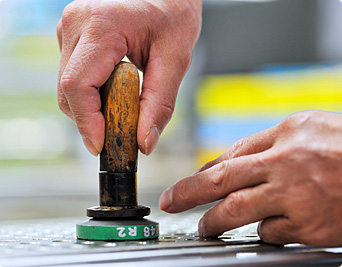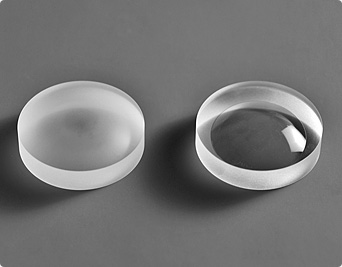Lens-polishing begins with the preparation of the polishing plate


Before polishing (left)
After polishing (right)
The optical glass first undergoes a grinding process, in which it is ground into approximate shape. This is followed by polishing, which smoothes the surface of the optical glass, increases the transparency of the glass, and achieves exact conformity with the shape required by the specifications.
The polishing plate is brought into contact with the optical glass, and as the polishing machine is rotated, the friction generated alters the surface of glass.
The work of polishing begins with the preparation of the polishing plate. The iron polishing plate is heated on a gas stove. Resin* is placed on the polishing plate and softened by the heat. The polishing plate is then pressed down against the polish-forming plate to spread out the resin and form it into the reverse shape of the lens surface that is to be polished. The preparation of the polishing plate is crucial, because its shape will be transferred to the optical glass.
Mr. Okawa appears to be casually pressing the polishing plate down onto the polish-forming plate. However, the ability to spread the resin out into a uniform thickness before it cools only comes with considerable experience.
Polishing makes the cloudy-white optical glass transparent and turns it into a high-precision optical lens.
- *Resin: a pitch known as bitumen that is a distilled petroleum product.

